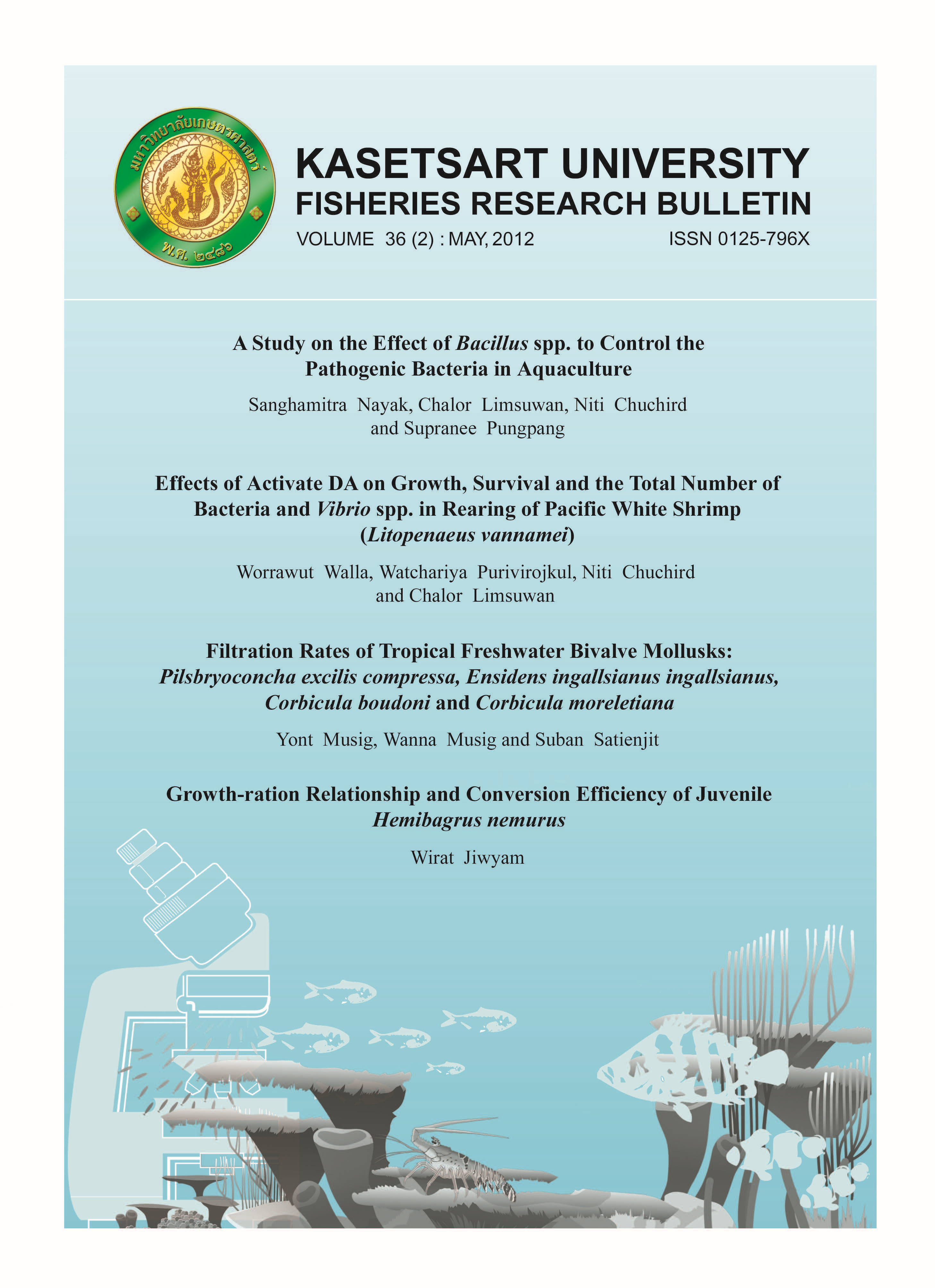Growth-ration Relationship and Conversion Efficiency of Juvenile Hemibagrus nemurus
Main Article Content
Abstract
To investigate the growth-ration relationship and feed conversion efficiency of a bagrid catfish Hemibagrus nemurus, an 8-week experiment was conducted in 12 indoor tanks. Juvenile H.nemurus with a mean weight of 1.83 g were fed a 40% protein and 3% lipid diet at 4 different ration levels (2, 3, 4 and 5% of initial body weight) per day. Water temperature was approximately 26.6°C throughout the experiment. The average final weight, specific growth rate and feed conversion efficiency were directly measured. At the end of the experiment, significant differences were found in growth parameters, average final body weight and specific growth rate among the four groups of fish receiving different rations (p<0.05). The relationship between specific growth rate in wet weight (SGRw, percentage per day) and ration level (RL, percentage per day) was an asymptotic curve described as SGRw = –0.2072RL2+2.0054RL–0.9959 (R2=0.9778; p<0.01). Feed conversion efficiency decreased significantly with increasing ration levels. Based on the above results, it may be concluded that a ration size of 4% of body weight per day is optimal for good growth and feed conversion efficiency of juvenile H.nemurus (from initial weight of 1.8g to final weight of 16g).


